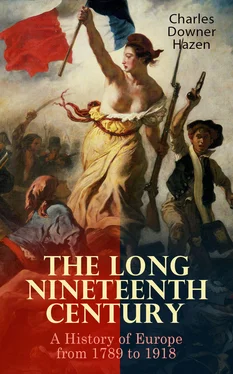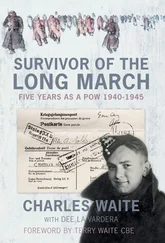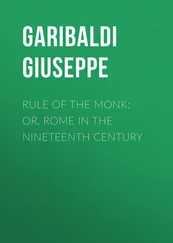The Committee of Public Safety and the Convention lost no time in striking a fast pace. To meet the needs of the war a general call for troops was issued. Seven hundred and fifty thousand men were secured. "What we need is audacity, and more audacity, always audacity" was a phrase epitomizing this aspect of history, a phrase thrown out by Danton, a man who knew how to sound the bugle call, knew how to mint the passion of the hour in striking form and give it the impress of his dynamic personality. Carnot, one of the members of the Committee of Public Safety, performed herculean feats in getting this enormous mass of men equipped, disciplined, and officered. A dozen armies were the result and they were hurled in every direction at the enemies of France. Representatives of the Convention accompanied each general, demanding victory of him or letting him know that his head would fall if victory were not forthcoming. Some failed, even under this terrific incentive, this literal choice between victory or death, and they went to the scaffold. It was an inhuman punishment but it had tremendous effects, inspiring desperate energy. The armies made superhuman efforts and were wonderfully successful. A group of fearless, reckless, and thoroughly competent commanders emerged rapidly from the ranks. We shall shortly observe the reaction of these triumphant campaigns upon the domestic political situation.
While this terrific effort to hurl back the invaders of France was going on, the Committee of Public Safety was engaged in a lynx-eyed, comprehensive campaign at home against all domestic enemies or persons accused of being such. By the famous law of "suspects," every one in France was brought within its iron grip. This law was so loosely and vaguely worded, it indicated so many classes of individuals, that under its provisions practically any one in France could be arrested and sent before the Revolutionary Tribunal. All were guilty of treason, and punishable with death, who "having done nothing against liberty have nevertheless done nothing for it." No guilty, and also no innocent, man could be sure of escaping so elastic a law, or, if arrested, could expect justice from a court which ignored the usual forms of law, which, ultimately, deprived prisoners of the right to counsel, and which condemned them in batches. Yet the Declaration of the Rights of Man, which had seemed a new evangel to an optimistic world, had stated that henceforth no one should be arrested or imprisoned except in cases determined by law and according to the forms of law.
A tree is judged by its fruits. Consider the results in this case. In every city, town, and hamlet of France arrests of suspected persons were made en masse, and judgment and execution were rendered in almost the same summary and comprehensive order of the fashion. Only a few instances can be selected from this calendar of crime. The city of Lyons had sprung to the defense of the Girondists after their expulsion from the Convention on June 2. It took four months and a half and a considerable army to put down the opposition of this, the second city of France. When this was accomplished the Convention passed a fierce decree: The city of Lyons is to be destroyed. Every house which was inhabited by the rich shall be demolished. There will remain only the homes of Lyons of the poor, of patriots, and buildings especially employed for industries, and those edifices dedicated to humanity and to education. The name of this famous city was to be obliterated. It was henceforth to be known as the Liberated City (Commune affranchie). This savage sentence was not carried out, demolition on so large a scale not being easy. Only a few buildings were blown to pieces. But over 3,500 persons were arrested and nearly half of them were executed. The authorities began by shooting each one individually. The last were mowed down in batches by cannon or musketry fire. Similar scenes were enacted, though not on so extensive a scale, in Toulon and Marseilles.
It was for the Vendee that the worst ferocities were reserved. The Vendee had been in rebellion against the Republic, and in the interest of counter-revolution. The people had been angered by the laws against the priests. Moreover the people of that section refused to fight in the Republic's armies. It was entirely legitimate for the government to crush this rebellion and it did so after an indescribably cruel war, in which neither side gave quarter. Carrier, the representative on mission sent out by the Convention, established a gruesome record for barbarity. He did not adopt the method followed by the Revolutionary Tribunal in Paris which at least pretended to try the accused before sentencing them to death. This was too slow a process. Prisoners were shot in squads, nearly 2,000 of them. Drowning was resorted to. Carrier's victims were bound, put in boats, and the boats then sunk in the river Loire. Women and children were among the number. Even the Committee of Public Safety was shocked at Carrier's fiendish ingenuity and demanded an explanation. He had the insolence to pretend that the drownings were accidental. "Is it my fault that the boats did not reach their destination?" he asked. The number of bodies in the river was so great that the water was poisoned and for that reason the city government of Nantes forbade the eating of fish. Carrier was later removed by the Committee, but was not further punished by it, though ultimately he found his way to the guillotine.
Meanwhile at Paris the Revolutionary Tribunal was daily sending its victims to the guillotine, after trials which were travesties of justice.
Guillotines were erected in two of the public squares and each day saw its executions. Week after week went by, and head after head dropped into the insatiable basket. Many of the victims were emigres or non-juring priests who had come back to France, others were generals who had failed of the indispensable victory and had been denounced as traitors. Others still were persons who had favored the Revolution at an earlier stage and had worked for it, but who had later been on the losing side in the fierce party contests which had rent the Convention. Nowadays political struggles lead to the overthrow of ministers. But in France, as in Renaissance Italy, they led to the death of the defeated party, or at least of its leaders. As the blood-madness grew in intensity, it was voted by the Convention, in order to speed up the murderous pace, that the Revolutionary Tribunal after hearing a case for three days might then decide it without further examination if it considered "its conscience sufficiently enlightened."
The Girondists were conspicuous victims. Twenty-one of them were guillotined on October 31, 1793, among them Madame Roland, who went to the scaffold "fresh, calm, smiling," according to a friend who saw her go. She had regretted that she" had not been born a Spartan or a Roman," a superfluous regret, as was shown by the manner of her death, "at only thirty-nine," words with which she closed the passionate Memoirs she wrote while in prison. Mounting the scaffold she caught sight of a statue of liberty. "O Liberty, how they've played with you!" she exclaimed.
She had been preceded some days before by Marie Antoinette, the daughter of an empress, the wife of a king, child of fortune and of misfortune beyond compare. The Queen had been subjected to an obscene trial, accused of indescribable vileness, the corruption of her son. "If I have not answered," she cried, "it is because nature herself rejects such a charge made against a mother: I appeal to all who are here." This woman's cry so moved the audience to sympathy that the officials cut the trial short, allowing the lawyers only fifteen minutes to finish. The Queen bore herself courageously. She did not flinch. She was brave to the end. Marie Antoinette has never ceased to command the sympathy of posterity, as her tragic story and the fall to which her errors partly led and the proud and noble courage with which she met her mournful fate have never ceased to move its pity and respect. She stands in history as one of its most melancholy figures.
Читать дальше












